
8 minute read
South America
Experience South America
Glacier sightings in Argentina, stargazing in Chile’s Atacama Desert, tortoises in the Galapagos...
Advertisement
Buenos Aires, Patagonia & Iguazú Classic Chile Quito & the Galapagos
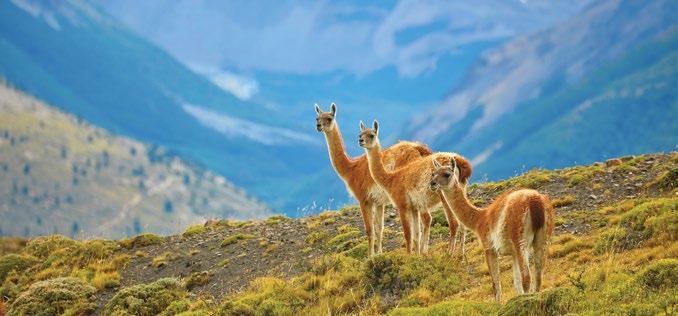
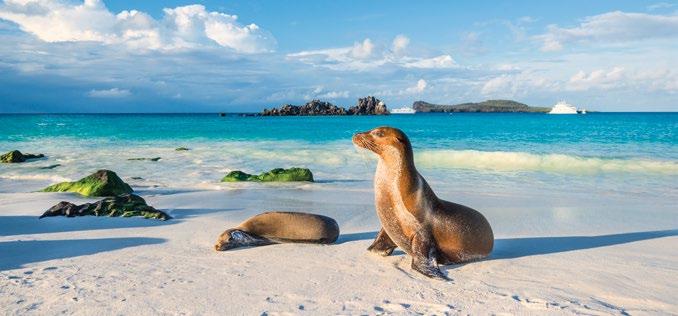
Sail the milky waters of Lago Argentino to visit the Perito Moreno Glacier, watch sultry tango in Buenos Aires, explore the Lake District and gaze at the might of Iguazú Falls on this 13-day suggested itinerary of Argentina’s highlights. This wide-ranging 14-day trip idea includes a visit to the dazzling-white Atacama Salt Flat, a chance to cross the Chacao Channel by ferry to take in the island of Chiloe, and views of Paine Massif in Torres del Paine National Park. This suggested trip gives you 13 days to delve into the many faces of Ecuador, including the colonial city of Quito, traditional markets, indigenous villages in the Highlands and the Galapagos Islands with their fearless wildlife.
Day
1-3 Arriving in Buenos Aires, wander through the cultural capital on your own before taking a tour of its best-known sights, including La Boca and Recoleta.
4-6 Los Glaciares National Park takes several days to fully appreciate. A highlight is the chance to sail across Lago Argentino and gaze at the creaking face of the Perito Moreno Glacier.
7-9 Get your bearings in the Lake District with a guided tour of Bariloche. Then, you’ll have time on your own to hike amid the region’s glacial lakes, emerald forests and extinct snow-capped volcanoes.
10-13 Visit both the Argentinian and Brazilian sides of Iguazú Falls, where you can admire its sheer overwhelming size, exploring by foot and by boat.
Day
1-2 Land in Santiago and take a privately guided tour of the city.
3-5 Try to count the stars in the sky and the flamingoes in the salt flats during these three days of exploring the Atacama Desert and high altiplano.
6-7 Hike or raft in the Vicente Pérez Rosales National Park and visit Osorno Volcano.
8 Continue to enjoy the landscapes of the Lake District with hikes in Alerce Andino National Park’s native larch forests.
9-11 With a guide from your lodge, head out into Torres del Paine National Park to admire the raw natural beauty, including the jagged peaks of Paine Massif.
12-14 Return to Santiago for one last night of exploration.
Days
1-4 Visit the Equatorial Monument on a guided city tour of Quito. Other highlights include Otavalo market and a walk around a volcanic crater lake.
5-6 Board your ship for the Galapagos Islands, including Galapaguera de Cerro Colorado, where you’ll see giant tortoises in their natural habitat.
7-9 Continue to explore the archipelago from your ship. You can snorkel or swim in Gardner Bay, where you might see sea lions. Spot myriad bird species from Punta Suarez and Cormorant Point. You’ll also visit the Post Office, an 18th-century barrel used by sailors and visitors for centuries to exchange mail.
10-13 Relax on the beaches of Finch Bay for a few days.
From £4,050 per person* From £6,490 per person* From £7,995 per person*

HAWAII

Elemental landscapes
HAWAII
Big Island
Black-sand beaches lapped by Pacific-blue waves, verdant jungles and starkly bare lava fields, vibrant coral reefs teeming with sea life and a night sky spangled with stars — I think the ideal Hawaii itinerary takes advantage of the archipelago’s distinctive landscapes and ecologies. I prefer an active trip, so I’ve spread out activities across the ten days that let you explore the islands, while also leaving you lots of time for relaxing by the water.

Alex USA specialist TRIP HIGHLIGHTS
• Snorkel with graceful manta rays. • Stargaze from the highest mountain in the Pacific. • Watch the sunrise from the peak of Haleakalā. • Explore Hawaii Volcanoes National Park with a private guide. • Buy banana bread on the scenic Highway to Hana.
Days 1-5: Big Island
When you land on Big Island, it’s impossible to miss the massive, soaring bulk of Mauna Kea, the tallest point in the state. The volcano’s peak offers uniquely clear skies for guided stargazing in the evening of your first day here.
Accompanied by an astronomer, you’ll drive past the end of the road and continue on a bumpy, dirty path to arrive at the summit just before sundown. Neither words nor photos can capture the glory of watching the sun sink into the ocean, spreading a warm glow of orange and gold on the water.
Once the light fades, your guide will set up a powerful telescope to help you pick out the constellations among the multitudes of twinkling stars. Astronomers from around the world come here for the unimpeded views of the night sky, including NASA, and it’s easy to see why. When I visited last, I got to peer at the individual rings of Saturn and the moons of Jupiter, and even glimpsed the silver wink of the International Space Station.
The next day, take a picnic lunch to Honomalino Bay, a tiny, tucked-away beach that’s known mostly to locals. You’ll access it via a short, 15-minute hike through dense greenery. Backed by palm trees, this half-mile stretch of salt-and-pepper sand is usually very quiet, with just a few others enjoying the water.
In the evening, you can go swimming with manta rays. Guides use a safe spotlight to attract swarms of tiny plankton, which, in turn, draw in huge numbers of these elegant creatures, some as wide as I am tall. Facedown in the dark water, holding a flotation device, you’ll have ample time to observe their ponderous grace as they flap and glide through the ocean in a slow-motion ballet. Also, the animals seem unafraid of humans and tend to swim very close
After two days of sleeping in, the next morning requires an early start as you drive across the island to meet a local guide for a private tour of Volcanoes National Park. When I went, my guide was Scott, a laid-back and loquacious transplant to the island who was incredibly knowledgeable about the park. He could offer everything from a detailed history of various eruptions to the name of the exact mineral that causes Hawaii’s unusual green sand (olivine).
Molokini Crater, Maui Alex has arranged trips across the whole USA for five years and still likes Hawaii best.
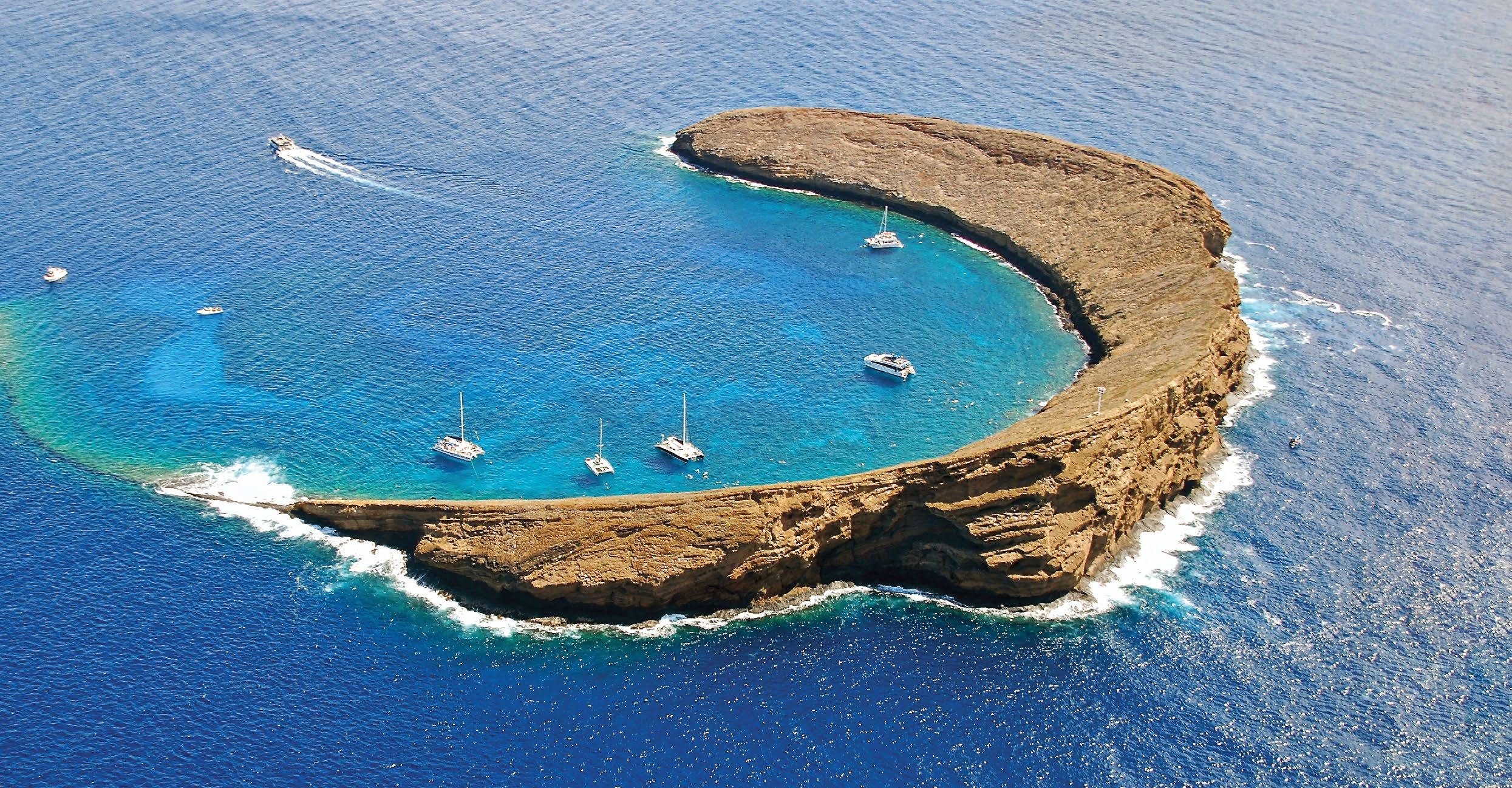
The early morning is entirely worth the effort. You’ll likely be the only visitor and can spend the morning admiring the lava flows from the two very active volcanoes that give the park its name. There’s also rainforest to explore and the fiery, steaming Halema’uma’u Crater.
The next day offers a different perspective on the park with a helicopter ride that passes over the steaming crater. On the ground, surrounded by volcanoes and dense rainforest, it’s easy to think that Hawaii is huge, but the helicopter ride gives you a chance to appreciate just how small the island is, a green speck in the vast blue Pacific.
Days 6-10: Maui
carefully controlled. To visit, you’ll need to join a small group trip on a catamaran that has all As you fly into Maui’s airport, look for the necessary permits. Molokini, an volcanic crater located just off the western coast. It’s been eroded by time and tides On the way back, the captain will also likely until all that remains is a slim curve of land that stop at the Fingers, a series of sculpturalbarely peeks over the seeming lava protrusions that attract nesting ‘The sunken crater shelters a water. The sunken crater shelters a thriving reef sea turtles. You can slip into the water and swim with these huge, slow creatures. thriving reef that teems with silver shoals of fish and other that teems with silver shoals of fish and other marine life. If you want marine life’ to go snorkeling when you’re in Hawaii, this is arguably the best place to do it. Molokini’s land and water are both protected as an official state seabird sanctuary, so access is MAKE THIS TRIP YOUR OWN
If you have young children, you might want to skip the sunrise adventures and instead include a few days in Oahu to visit the location where they filmed Jurassic Park.
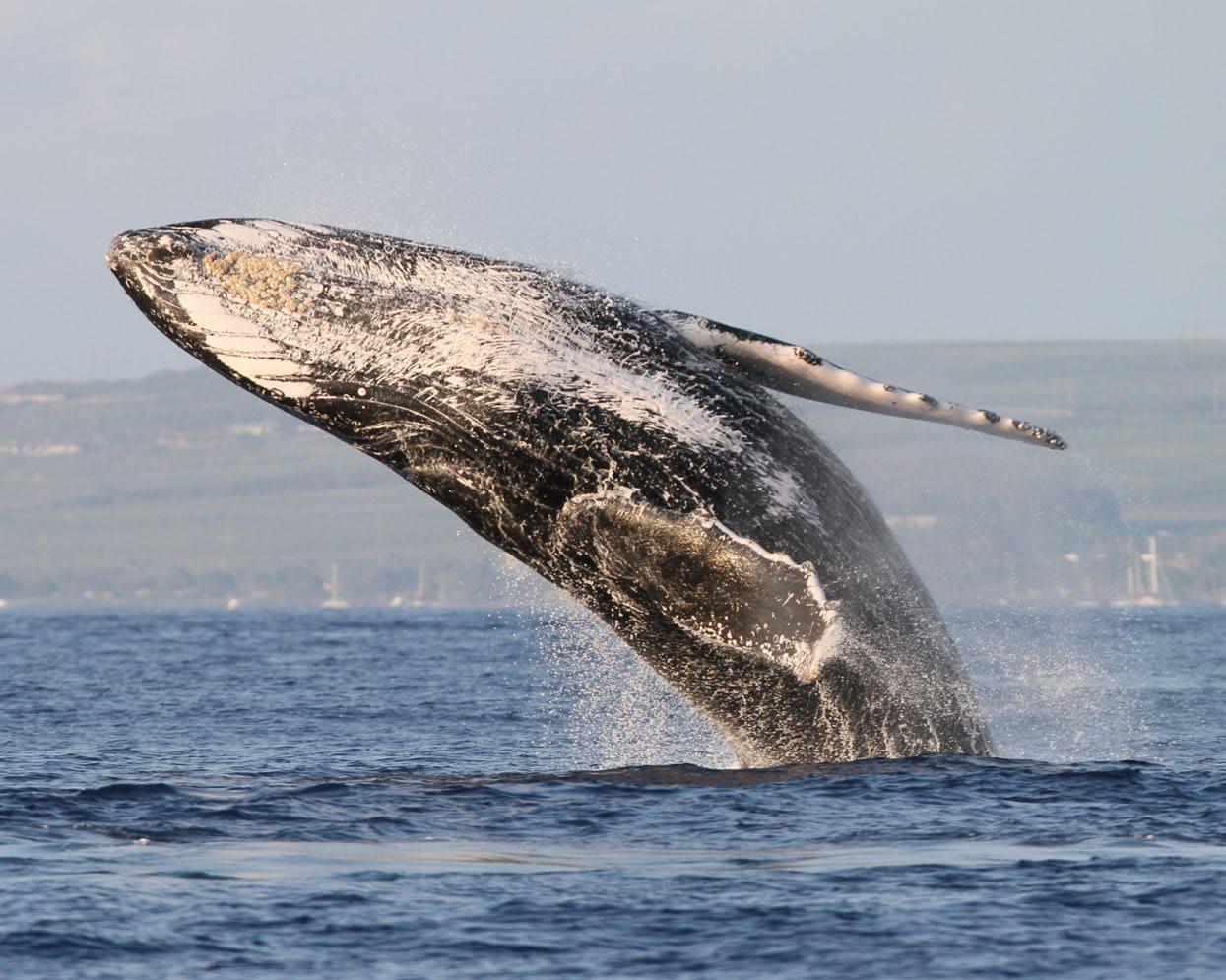
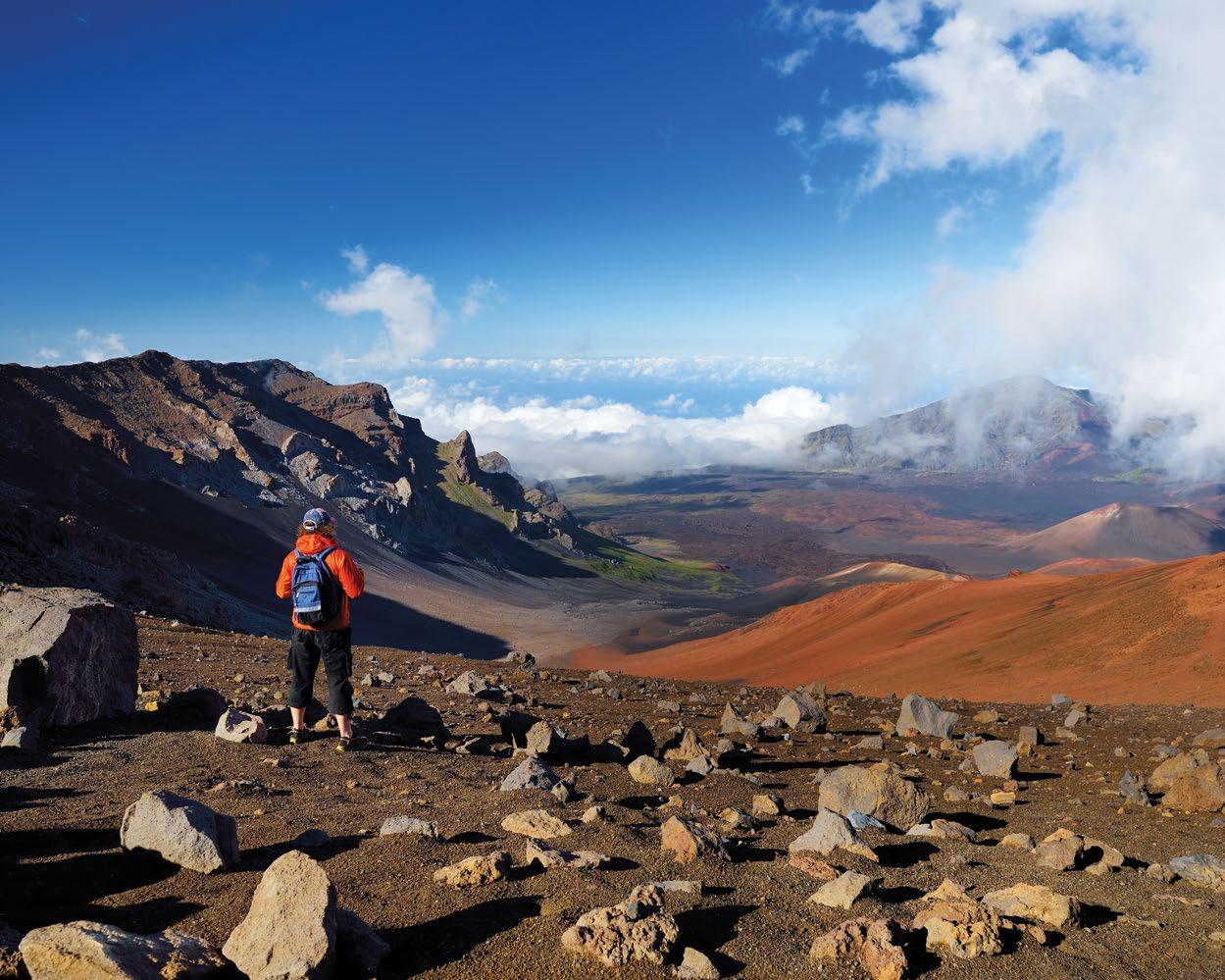
Hiking on Maui Humpback whale off Maui
When to go
Having thoroughly explored land, sea and sky, your next adventure is on the Highway to Hana, a scenic coastal road that combines all three. The highway winds along the undulating coast, with vast ocean on one side and densely rainforested slopes on the other; the greenery is punctuated by banana-bread vendors, fruit stalls and silvery waterfalls where you can pause for a swim or snack. At the end of the highway, I suggest taking time for lunch at the Travaasa Hana hotel before your drive back.
The next day, watch the sunrise from the summit of Haleakalā. It’s a local tradition, so plan in advance to reserve a parking space. Your efforts will be rewarded by the sight of dawn breaking over the gentle clouds. On the drive back down, I like to stop for lunch at Mama’s Fish House, the island’s best seafood restaurant. Your final day depends on when you visit. In January, February or March, humpback whale pods come to give birth in the calm, warm waters and nurse the calves before heading north to the richer, colder waters of the Arctic. Whale sightings are never guaranteed, of course, but I’ve rarely heard of a boat from Maui not spotting a whale.
The other nine months of the year, I suggest spending your last day sampling Hawaii’s unique selection of pineapple wines at MauiWine.
From £3,860 per person, including flights, accommodation, activities and transfers.
JAN FEB MAR APR MAY JUN JUL AUG SEP OCT NOV DEC
3 3 3 3 3 3 3 3 3 3 3 3 3 3 3 3 3 3 3 3 3 3 3 3
Hawaii is a year-round destination, but if you want to see humpback calves, visit in January, February or March.










